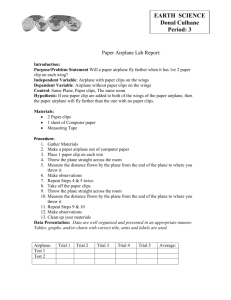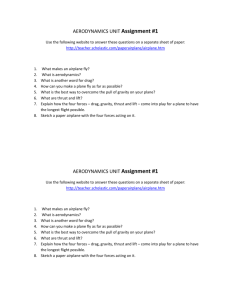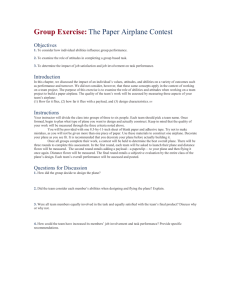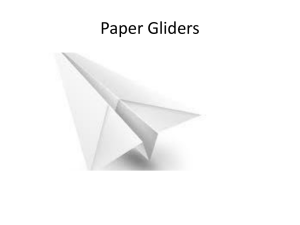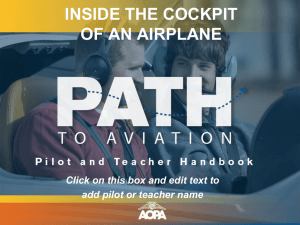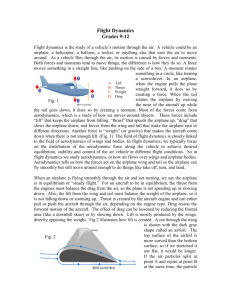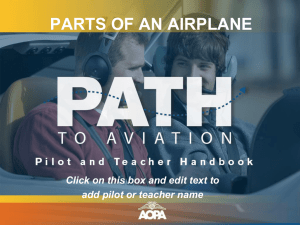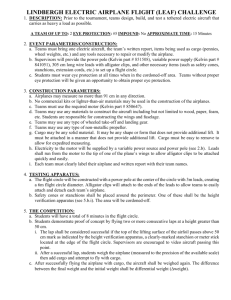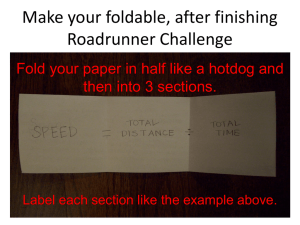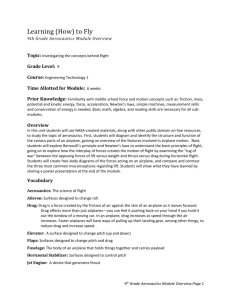SUPER WINGS AREA OF TECHNOLOGY: Transportation
advertisement
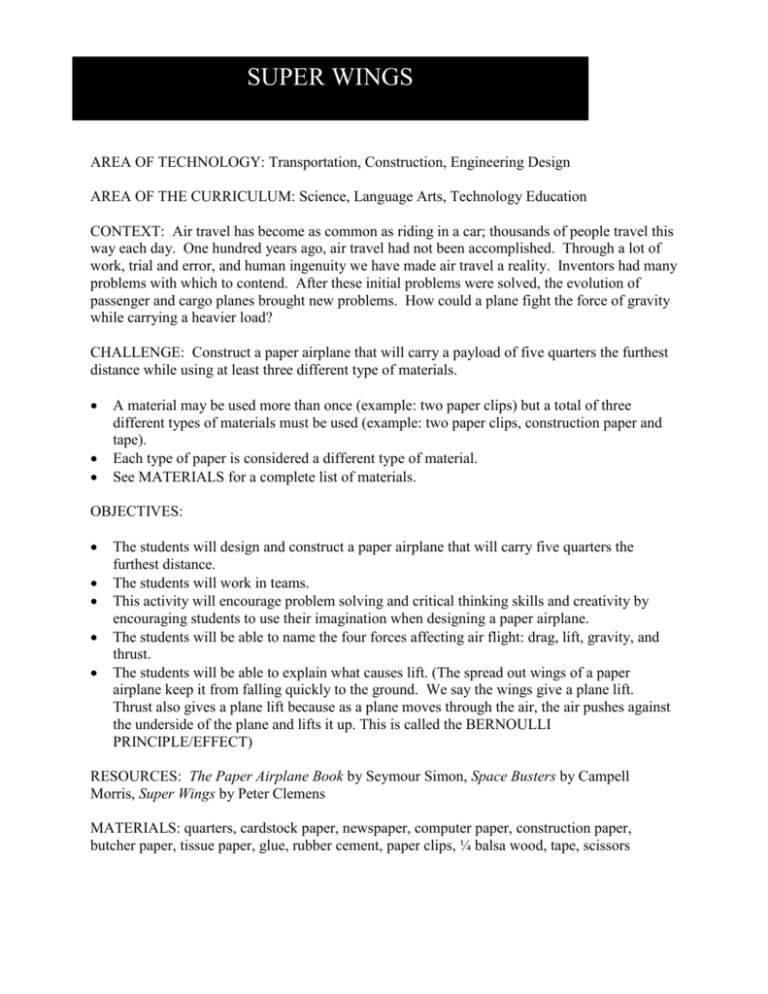
SUPER WINGS AREA OF TECHNOLOGY: Transportation, Construction, Engineering Design AREA OF THE CURRICULUM: Science, Language Arts, Technology Education CONTEXT: Air travel has become as common as riding in a car; thousands of people travel this way each day. One hundred years ago, air travel had not been accomplished. Through a lot of work, trial and error, and human ingenuity we have made air travel a reality. Inventors had many problems with which to contend. After these initial problems were solved, the evolution of passenger and cargo planes brought new problems. How could a plane fight the force of gravity while carrying a heavier load? CHALLENGE: Construct a paper airplane that will carry a payload of five quarters the furthest distance while using at least three different type of materials. A material may be used more than once (example: two paper clips) but a total of three different types of materials must be used (example: two paper clips, construction paper and tape). Each type of paper is considered a different type of material. See MATERIALS for a complete list of materials. OBJECTIVES: The students will design and construct a paper airplane that will carry five quarters the furthest distance. The students will work in teams. This activity will encourage problem solving and critical thinking skills and creativity by encouraging students to use their imagination when designing a paper airplane. The students will be able to name the four forces affecting air flight: drag, lift, gravity, and thrust. The students will be able to explain what causes lift. (The spread out wings of a paper airplane keep it from falling quickly to the ground. We say the wings give a plane lift. Thrust also gives a plane lift because as a plane moves through the air, the air pushes against the underside of the plane and lifts it up. This is called the BERNOULLI PRINCIPLE/EFFECT) RESOURCES: The Paper Airplane Book by Seymour Simon, Space Busters by Campell Morris, Super Wings by Peter Clemens MATERIALS: quarters, cardstock paper, newspaper, computer paper, construction paper, butcher paper, tissue paper, glue, rubber cement, paper clips, ¼ balsa wood, tape, scissors DEFINITONS: drag- the force that slows an airplane down lift- the force that makes an airplane go up or keeps it up in the air thrust- the force that makes an airplane move forward through the air gravity- the force that pulls things down toward the earth and keeps them from floating away into space Bernoulli Principle/Effect PROCEDURE: There will be a group discussion on the resource books. Simple paper airplanes will be demonstrated and flown. The teams will look at the available materials and decide which ones they will use. Keeping in mind the problem they are facing, the teams will design a plane to carry a load. When they design the paper airplane, they have to balance the lift and thrust so that they will be stronger than gravity and the drag of the air. After the design is complete, there will be a test of the airplane. Teams may modify the plane, start over with new materials, or stay with what they have designed. Students may seek the advice of the teacher or other teams to help understand the principles of flight that are affecting the plane, but they must make any suggested modifications themselves. The team whose plane travels the farthest distance in a straight line will be declared the winners. ASSESSMENT: The students will be given points based on how many quarters they use and the distance of flight with those quarters. Each group will be allowed a total of five flights. The points for all five flights will be totaled to determine the winner. Cargo 5 quarters 4 quarters 3 quarters 2 quarters 1 quarter FEEDBACK: 5 feet 7 points 6 points 5 points 4 points 3 points 10 feet 8 points 7 points 6 points 5 points 4 points 15 feet 9 points 8 points 7 points 6 points 5 points 20 feet 10 points 9 points 8 points 7 points 6 points The student’s practice flights will give them feedback on how well their paper airplane carries quarters for a distance. The students will receive advice and guidance from the teacher and other students. REDESIGN: The students will have the opportunity to redesign their paper airplane with its quarter payload after their initial flight and before competition with their classmates. After the competition, the class will assess the qualities of the best airplanes and together create another airplane that combines these qualities into one plane. After the redesign, the teacher or an identified student will fly or propel all of the classes’ planes to ensure that there are no constraint comparisons based on student size or strength.
